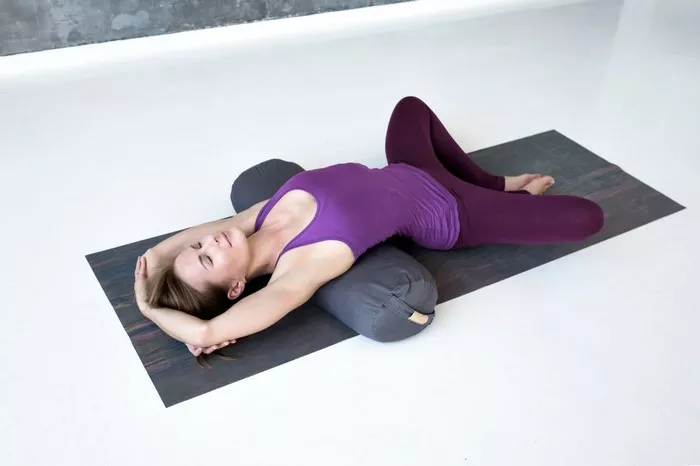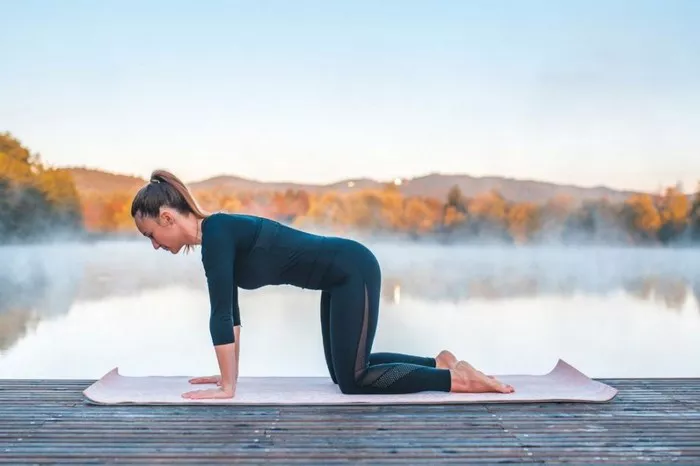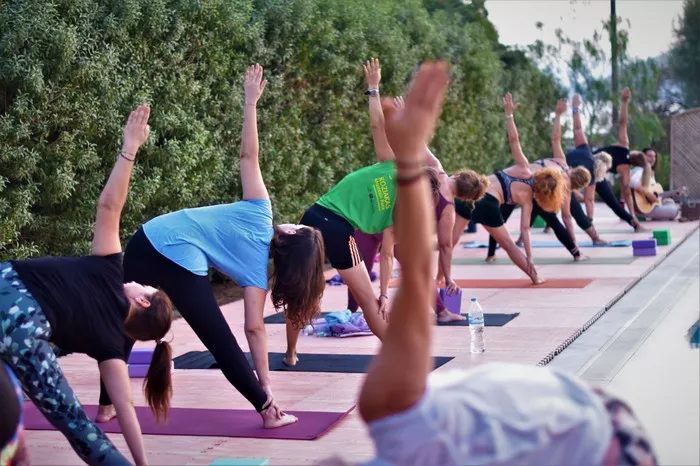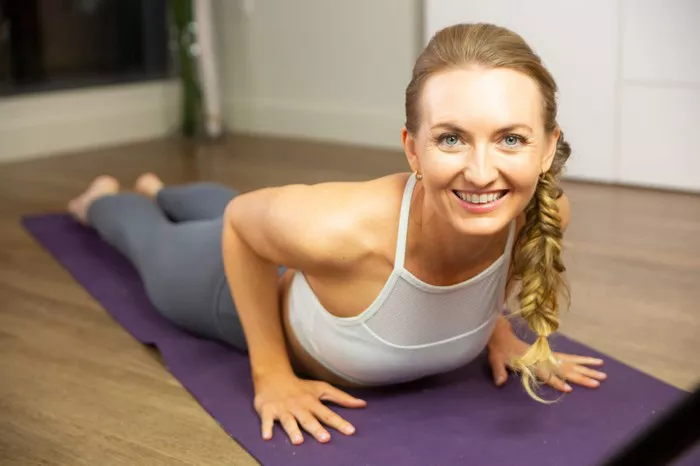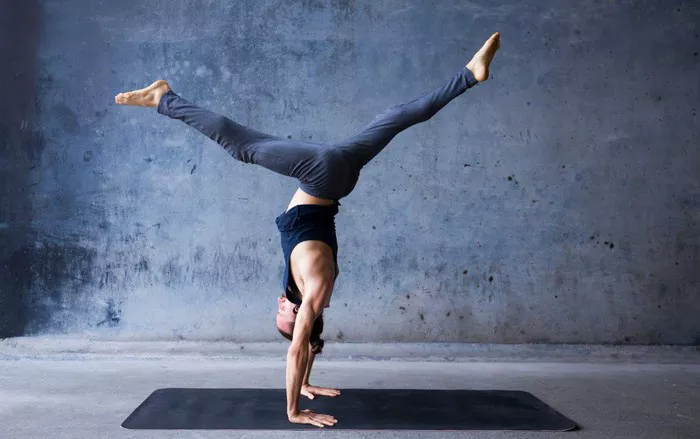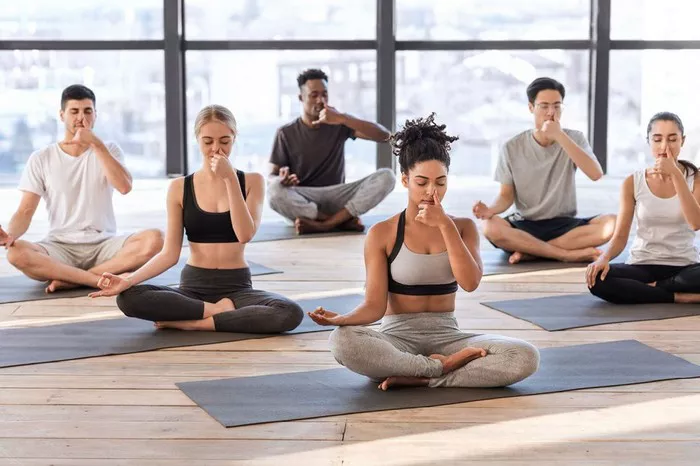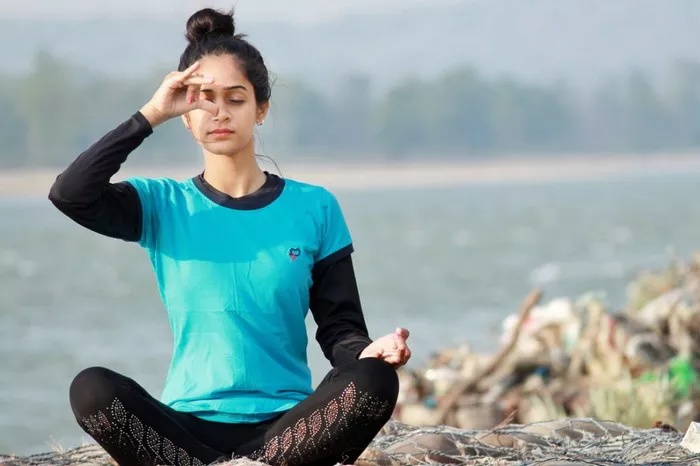Yoga, with its holistic approach to physical and mental well-being, offers numerous poses (asanas) that target different parts of the body and mind. One such pose is the Cow Face Pose, known in Sanskrit as Gomukhasana. Recognizable by its distinctive seated posture with crossed legs and hands clasped behind the back, Gomukhasana is a traditional yoga pose that has been practiced for centuries. But the question often arises: Is Cow Face Pose healthy?
This article explores the health benefits, potential risks, contraindications, and best practices for Cow Face Pose, providing a detailed, balanced view so practitioners can make informed decisions about incorporating this pose into their yoga practice.
What Is Cow Face Pose (Gomukhasana)
Cow Face Pose derives its name from the shape formed by the legs and arms, which are said to resemble the face of a cow, an animal revered in many cultures. The pose is typically performed in a seated position and involves:
- Sitting with knees stacked one on top of the other.
- One foot placed beside the opposite hip.
- The arms extended with one elbow bent behind the back, the other reaching over the shoulder, and the hands clasping together.
This posture is known for providing a deep stretch to multiple parts of the body simultaneously. It’s often included in yoga sequences to enhance flexibility, open the chest and shoulders, and improve posture.
Health Benefits of Cow Face Pose
Cow Face Pose offers a range of physical and mental health benefits when practiced correctly and regularly. Let’s explore these benefits in detail.
1. Improves Flexibility in Hips and Shoulders
One of the primary benefits of Gomukhasana is increased flexibility in the hips and shoulders. Sitting with knees stacked requires external rotation of the hip joints, which stretches the muscles around the hips, such as the piriformis and gluteal muscles. This can help alleviate tightness from prolonged sitting or athletic activities.
The arm position stretches the shoulders, particularly the rotator cuff muscles and the deltoids. This is especially beneficial for individuals who experience tightness from desk work, poor posture, or repetitive overhead activities.
2. Enhances Postural Alignment
Cow Face Pose promotes spinal alignment by encouraging an upright sitting posture. Engaging the back muscles and elongating the spine helps counteract the slouching posture many adopt during daily activities. Improved posture not only reduces back pain but also enhances breathing efficiency.
3. Relieves Tension and Stress
Like many seated yoga poses, Gomukhasana provides a calming effect. The deep hip opening and shoulder stretch help release muscle tension, which can accumulate due to stress or physical strain. Additionally, the pose encourages mindful breathing, which activates the parasympathetic nervous system, promoting relaxation.
4. Stimulates Circulation
The pose improves blood flow in the hips, legs, and shoulders. This increased circulation can help reduce muscle stiffness, prevent cramps, and support the health of joints and tissues in the lower body and upper back.
5. Improves Digestion
By sitting upright with a straight spine, Gomukhasana gently massages abdominal organs, which may enhance digestive function. The position also helps reduce bloating and discomfort by encouraging mindful awareness of the core and breathing patterns.
6. Balances Energy Centers
In yogic philosophy, Cow Face Pose is believed to balance the chakras—energy centers in the body. The pose is thought to stimulate the Anahata chakra (heart center), promoting emotional openness, compassion, and balance.
Potential Risks and Contraindications
While Cow Face Pose is beneficial for many, it is not without potential risks, especially for certain populations or when performed incorrectly. Awareness of these is crucial to practice safely.
1. Knee Issues
The position of the legs in Gomukhasana places considerable pressure on the knees due to the stacked, externally rotated position. People with pre-existing knee injuries, arthritis, or ligament problems should approach this pose cautiously or avoid it altogether. Using props or modifications can help mitigate knee strain.
2. Shoulder Injuries
The arm positioning can be challenging for those with shoulder injuries, such as rotator cuff tears, frozen shoulder (adhesive capsulitis), or impingement syndrome. Forcing the arms to clasp behind the back may worsen pain or cause injury. Alternative arm positions or the use of a yoga strap can provide safer options.
3. Hip Discomfort
Individuals with hip issues such as labral tears, bursitis, or significant tightness in hip flexors and rotators may find the pose uncomfortable or painful. It is essential to warm up adequately and progress gradually.
4. Spinal Problems
While the pose encourages an upright spine, those with certain spinal conditions such as herniated discs or severe scoliosis should seek professional guidance before attempting Cow Face Pose.
5. Pregnancy
During pregnancy, especially in later trimesters, sitting in this pose might be uncomfortable due to changes in hip flexibility and pelvic structure. Modifications or alternative poses should be considered.
How to Practice Cow Face Pose Safely
To enjoy the benefits and minimize risks, proper technique and mindful practice are essential.
Step-by-Step Instructions:
- Start in a seated position: Sit on the floor with legs extended forward.
- Cross the legs: Bend the knees and stack the right knee directly over the left knee. Bring the feet beside the hips, as close to the body as possible.
- Align the spine: Sit up tall, lengthening the spine. Engage the core muscles slightly for support.
- Position the arms: Raise the right arm overhead, bend the elbow, and let the hand reach down the spine. Simultaneously, bring the left arm behind the back, bending the elbow, and try to clasp the fingers of both hands. If clasping is difficult, use a yoga strap or towel to bridge the gap.
- Relax the shoulders: Avoid scrunching the shoulders toward the ears. Keep them relaxed and down.
- Hold and breathe: Maintain the pose for 30 seconds to 1 minute, breathing deeply and evenly.
- Switch sides: Release and repeat with the left knee stacked over the right, switching arm positions accordingly.
Tips for Safety and Comfort:
- Use a folded blanket or yoga block to sit on if hip tightness makes it difficult to keep the spine straight.
- Modify arm positions by using a strap to avoid overstraining the shoulders.
- Avoid forcing knees down if they feel painful; gentle engagement is preferable.
- Always warm up with gentle stretches targeting the hips and shoulders before attempting Gomukhasana.
- If pain arises, gently exit the pose.
Variations and Modifications
1. Using Props
Yoga straps or towels can be looped around the hands if they cannot clasp behind the back. Sitting on a bolster or folded blanket can elevate the hips, reducing pressure on knees and enhancing comfort.
2. Half Cow Face Pose
For beginners or those with limited flexibility, practicing one arm and one leg position at a time can provide some benefits without strain. For example, sitting with knees crossed normally and focusing on the shoulder stretch alone.
3. Chair Version
Practicing Gomukhasana seated on a chair with the legs stacked or crossed and arms reaching behind can accommodate those with limited floor mobility.
Scientific Evidence Supporting Cow Face Pose Benefits
Although research specific to Gomukhasana is limited, scientific studies on yoga’s effects on flexibility, posture, stress reduction, and musculoskeletal health indirectly support the benefits of Cow Face Pose.
- Flexibility and Joint Health: Research confirms that regular yoga practice improves joint range of motion and muscle flexibility, reducing stiffness and enhancing function.
- Postural Improvements: Studies show yoga aids spinal alignment and strengthens postural muscles, decreasing back and neck pain.
- Stress Reduction: Yoga’s impact on the autonomic nervous system reduces cortisol levels and promotes relaxation, with seated poses enhancing this effect.
- Circulation: Yoga improves peripheral blood flow, aiding in the nourishment of tissues and the removal of metabolic waste.
Who Should Practice Cow Face Pose?
Cow Face Pose is ideal for:
- Individuals seeking to improve hip and shoulder flexibility.
- People wanting to counteract the effects of prolonged sitting or poor posture.
- Yoga practitioners aiming to deepen their seated postures.
- Those looking for a calming, meditative seated pose that also stretches the upper body.
- Athletes needing hip external rotation and shoulder mobility.
When to Avoid Cow Face Pose
Avoid or modify Gomukhasana if you have:
- Acute or chronic knee injuries.
- Shoulder injuries or recent surgeries.
- Severe hip pain or recent hip surgery.
- Significant spinal issues without professional guidance.
- Pregnancy in later stages without modifications.
Conclusion
In conclusion, Cow Face Pose is indeed healthy for most practitioners when approached mindfully and performed with proper technique. It offers substantial benefits for flexibility, posture, stress relief, and overall musculoskeletal health. However, like any physical practice, its healthfulness depends on individual circumstances, body conditions, and mindful adaptation.
For beginners or those with health concerns, consulting a qualified yoga instructor or healthcare provider before practicing Gomukhasana is advisable. With awareness, respect for the body’s limits, and appropriate modifications, Cow Face Pose can be a valuable addition to a balanced yoga practice that supports long-term health and well-being.
Related Topics:



